This is one of my favorite dishes featuring white beans, and the key is to cook the beans from dried instead of relying on a canned shortcut. I know it requires some extra time, but the end result is absolutely worth it as evidenced by superior flavor and texture. When served over lemony, smoky broccolini and drizzled with a piquant anchovy vinaigrette, these white beans make for a sublime and satisfying meat-free meal. (Though meatless, this dish is not technically vegetarian since the vinaigrette contains anchovies; see the recipe notes for my recommended vegan alternatives.)
We all know that beans have a reputation for being difficult to digest – this is due to the presence of certain complex sugars that our bodies can’t break down. Unfortunately, counter to what many people think, soaking beans before cooking them doesn’t do much to improve digestibility. It also leaches out a lot of their natural flavor, so unless you add back extra seasoning to make up for it, your beans will end up bland. There is another solution, however, and believe it or not, it’s seaweed. Specifically kombu, which is a variety of brown kelp.
This is what dried kombu looks like, and yes, I keep a big jar of it on hand because I use it a lot. I know it doesn’t look like much, so you’ll have to trust me on this one. Kombu contains enzymes that break down those pesky sugars, so adding a piece of it to your beans during cooking is all you really need to do to make them easier to digest. The bonus? Kombu is rich in glutamic acid – which provides that “fifth taste” known as umami – so it makes your beans taste better too. Seaweed for the win!
The beans are only part of the story in this dish though, so let’s talk about the other components. Next up is broccolini, also called broccolette or sprouting broccoli. Though it may look like a miniaturized or immature version of broccoli, broccolini is a hybrid of standard broccoli and a Chinese vegetable called gai lan (a.k.a. Chinese broccoli or Chinese kale). The flavor of broccolini is a bit sweeter than standard broccoli, and unlike its larger cousin (parent?), it has completely edible tender stems that don’t require any peeling. I personally think the stalk is the best part of broccoli, so getting more of it – all of which is edible – makes me happy. Broccolini cooks quickly and doesn’t require too much effort, and it’s equally at home on the stovetop or grill as it is in the oven. I char mine in a pan on the stove for this recipe, but feel free to do it on the grill instead if you have access to one.
Last but certainly not least is the vinaigrette, and I’ve spiked it with anchovies for a serious savory punch. As far as I’m concerned, anchovies are an underutilized culinary gem. They pack a ton of flavor in a really small package, and when used in proper proportion and balance with other ingredients, they manage to enhance the dish they’re in without announcing their presence. When treated properly anchovies don’t make a dish taste fishy, they just make it taste better. Obviously anchovies aren’t appropriate for vegans, vegetarians, or anyone with a fish allergy. If that’s the case in your household, you can substitute umeboshi paste, or a combination of miso paste and kalamata olives to approximate the anchovy flavor (keep reading for details on that).
I don’t know about you, but all this talk of savory deliciousness is making me hungry! Let’s get cooking, and since the beans take the longest, they’re up first. We’re building layers of flavor into them with a few basic aromatics in addition to the kombu. Peel and halve the shallot lengthwise, peel and cut the carrot into eighths, and toss all the pieces into the pot with the dried beans, seaweed, and peppercorns. Lightly crush the garlic cloves with your palm or the flat side of a knife, and slip off the peel. The key here is to crush the garlic just enough to release the aromatic compounds, but keep the cloves intact so you can fish them out at the end. Discard the garlic peel and toss the cloves into the pot along with the remaining seasonings.
Add enough water or unsalted stock to cover the beans by one inch, crank up the heat, and bring the liquid to a boil. Once it starts boiling, reduce the flame to maintain a bare simmer, and cook the beans for about 1 ½ to 2 hours until tender but still holding their shape – you don’t want them to get mushy or disintegrate. The one problem with timing the cooking of dried beans is that it really varies depending on their age and size. I typically begin checking mine after an hour to see how far along they are, then gauge my remaining cook time from there, checking on them at regular intervals. When you test your beans, be sure to do two or three at a time in case there’s a mix of different ages in there. The last thing you want is to test a single bean that isn’t cooked through yet only to discover a few minutes later that it was a fluke and the rest of them ended up overdone.
The beans are simmering, so it’s a good time to blend up the vinaigrette. If you don’t have a blender you can make the vinaigrette in a bowl, just pound the anchovy fillets into a paste and mince or grate the garlic instead of roughly chopping it. Then you can whisk everything together by hand. If you’re going the anchovy-free/vegan route you should really use a blender so the olives get fully incorporated. Alternatively, umeboshi paste blends in as easily as the anchovy does.
Here’s my blended and perfectly emulsified vinaigrette, which I’ll keep at room temperature for now since I’ll be using it soon. If you want to make this ahead, store it in the refrigerator in a glass jar. The oil will solidify in the fridge, so when you’re ready to use the vinaigrette run the jar under warm water for a few seconds to melt the oil, then give it a brisk shake. Okay, all that’s left at this point is the broccolini and you’ll want to cook it right before you serve the dish, which means you have some time to kill since the beans have a ways to go. Clean up a bit, read a book, do a little work, or hey, browse some other recipes here on the blog! Just stick close to the kitchen so you can watch the beans and add more cooking liquid as necessary.
Once the beans are cooked, drain them and put them back in the pot, covered, to keep them warm. You can discard all the aromatics now, though if you’re like me you’ll eat the carrot. I do the same thing when I make stock – I call it the cook’s treat.
Before I toss it I want to show you what happened to the kombu as it cooked. It softened completely and basically fell apart when I grabbed it with my handy little wooden tongs. Notice the color – the dark outer layer is mostly gone because it dissolved into the pot, bringing all of its briny umami flavor with it to enhance the beans. Pretty awesome, huh? You can discard the remaining solid piece.
Now it’s time to tackle the broccolini. Like other cruciferous vegetables it pairs really well with lemon, but like most greens it also has a tendency to turn an unappealing shade of grayish-brown when exposed to acid. If you’ve learned anything about me by now, you know that I love beautiful food, have a thing for citrus zest, and can’t stand to waste anything edible. To maintain the deep green color of the broccolini I cook it with the zest from a lemon instead of the juice, then cut the lemon into slices that get a quick caramelization in the hot pan. The slices make a lovely garnish, and they add an extra hint of their citrusy perfume to the plate as they sit atop the warm broccolini. No one is going to care (or likely even notice) that they’re missing their zest, the green stays vibrant, and nothing goes to waste. Winning!
You want a nice char on the broccolini, so I recommend a heavy duty cast iron or stainless skillet for this part – it will withstand and retain the heat, giving the broccolini a chance to brown nicely. A flimsy or nonstick pan won’t give you the same result (and you shouldn’t use nonstick over anything higher than medium heat). The pan needs to be hot, so set it over high heat to get it going. Give the broccolini a quick rinse, and shake off excess water. If any of the stem ends look dried out or tough, trim them off and discard; you can also slice any unusually thick stems in half so they all cook at the same rate. Toss the broccolini with olive oil and a generous pinch of salt, and add it to the hot pan. Be careful here – water that clung to the surface of the broccolini after you rinsed it has the potential to spatter. Leave it alone in the pan for 2-3 minutes (no stirring!) to give it a chance to char.
Once it’s browned in spots, toss or stir it and let it cook for another 1-2 minutes to allow other areas to take on some color. If things are starting to smoke, turn the heat down a notch. Then add the lemon zest and red pepper flakes, give everything a toss, and cook for another minute. If your broccolini stems are thick they may need a little encouragement to tenderize. Drizzle a tablespoon of water into the pan and cover it for about 30 seconds – the steam will soften the stems in no time.
Divide the broccolini among plates, and put the pan back on the stove. Grab that lemon you zested earlier and cut it into thin slices. Lay the slices in the hot pan and let them caramelize for a minute. Spoon the beans over the broccolini, drizzle with anchovy vinaigrette, and garnish with chopped parsley and charred lemon slices. Enjoy!
- For Beans:
- 8 oz (1 cup) dried cannellini or great northern beans, rinsed & drained
- 1 3-inch strip kombu¹
- 1 large shallot, peeled and quartered
- 1 large carrot, peeled and cut into large chunks
- 2 cloves garlic, peeled and lightly crushed (leave intact)
- 1 bay leaf
- 5 black peppercorns
- ½ tsp Kosher salt
- Water or unsalted vegetable stock
- For Vinaigrette:
- 120 ml (½ cup) extra virgin olive oil
- 90 ml (6 Tbsp) aged sherry vinegar
- ½ tsp Dijon mustard
- 4 anchovy fillets or 2 tsp anchovy paste²
- 1 clove garlic, peeled and roughly chopped
- Kosher salt
- Freshly ground black pepper
- For Broccolini:
- 1 lb broccolini, tough ends trimmed
- 30 ml (2 Tbsp) extra virgin olive oil
- Kosher salt
- Generous pinch dried red pepper flakes
- 1 tsp finely grated lemon zest (from about ½ large lemon)
- For Serving:
- Chopped Italian parsley, charred lemon slices
- Cook beans: Add beans, kombu, shallot, carrot, garlic, bay leaf, peppercorns, and salt to a medium saucepan. Add water to cover by one inch, and bring to a boil. Reduce to simmer and cook for 1 ½ -2 hours until tender but still holding their shape, adding liquid as necessary to cook through and keep them from drying out. (Cooking time will depend on size and age of beans, so start checking them after about an hour to see how they’re doing, and gauge remaining cook time accordingly.) Drain beans and discard all aromatics.
- Make vinaigrette: Add all ingredients to blender and puree until smooth. (Alternatively you can whisk everything together in a bowl, just mash whole anchovy fillets and mince or grate garlic first.) Season to taste with salt and pepper, and adjust with more oil or vinegar if desired. Set aside.
- Cook broccolini: Rinse broccolini in cool water and shake off excess. Toss broccolini with olive oil, and season with a generous pinch of salt. Heat a heavy cast iron or stainless skillet over high heat, add broccolini, and cook without stirring for about 2 minutes or until browned in spots. Toss and continue to cook for another 2 minutes, add red pepper flakes and lemon zest, toss once more, and cook for another minute until broccolini is tender.
- Serve: Arrange broccolini on plates and leave pan on stove. Slice zested lemon into thin slices, and lay the slices in the still-hot pan to caramelize for a minute. Spoon beans over broccolini. Drizzle with anchovy vinaigrette, and garnish with chopped parsley and charred lemon slices.
²To accommodate a seafood allergy or make this dish vegetarian/vegan friendly, substitute the anchovy with either 2 tsp umeboshi paste, or 1 tsp white or yellow miso + 1 Tbsp chopped kalamata olive.
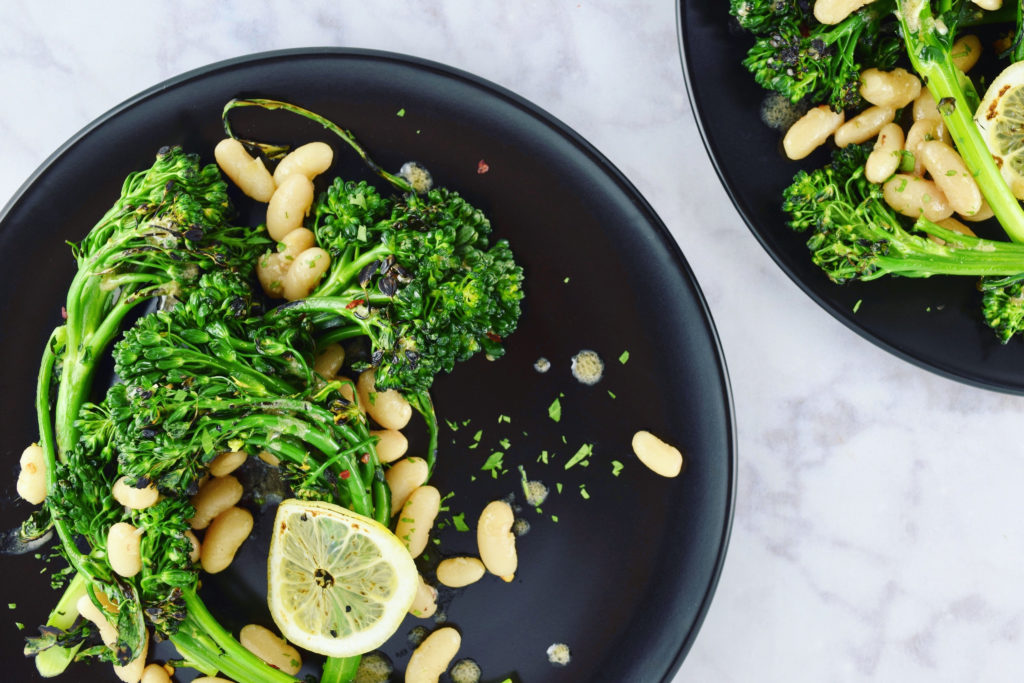
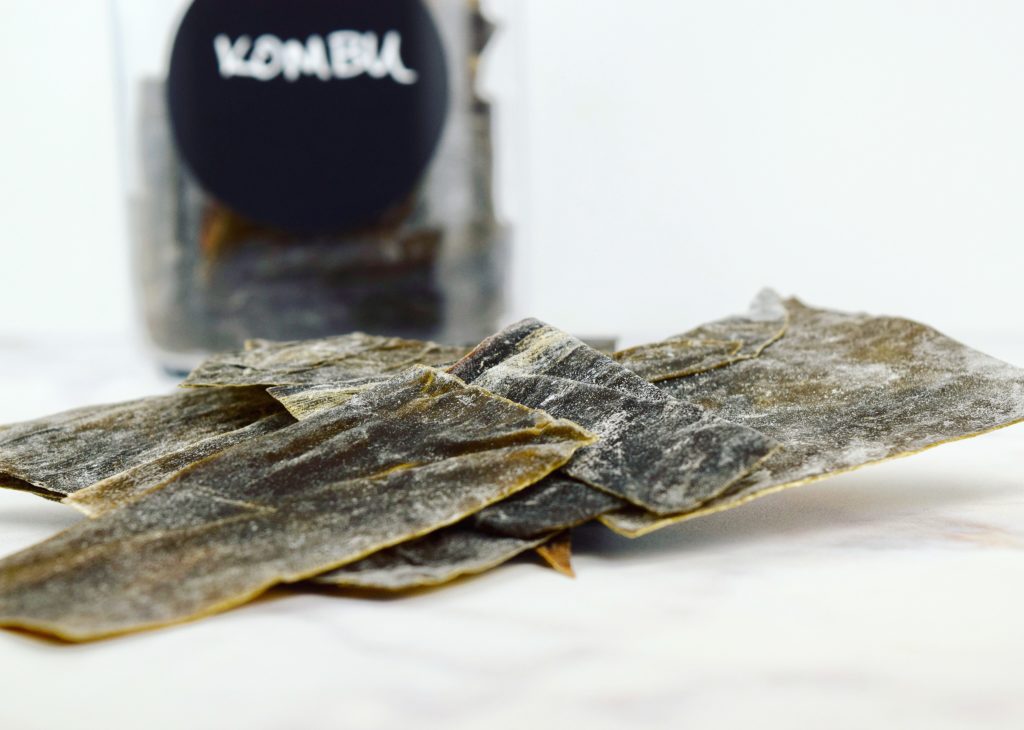
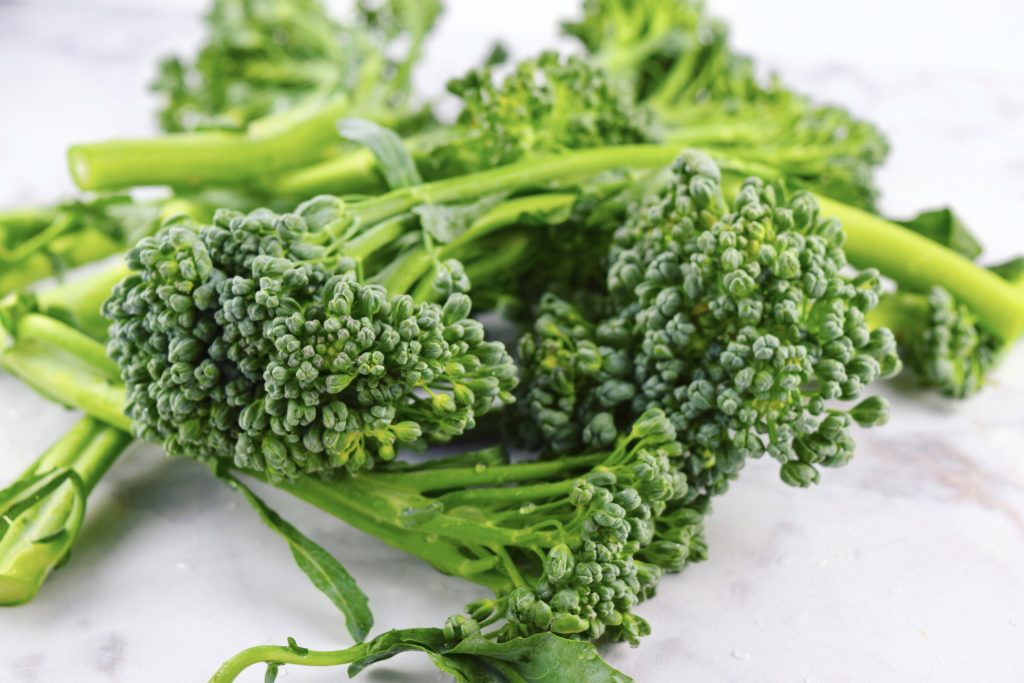
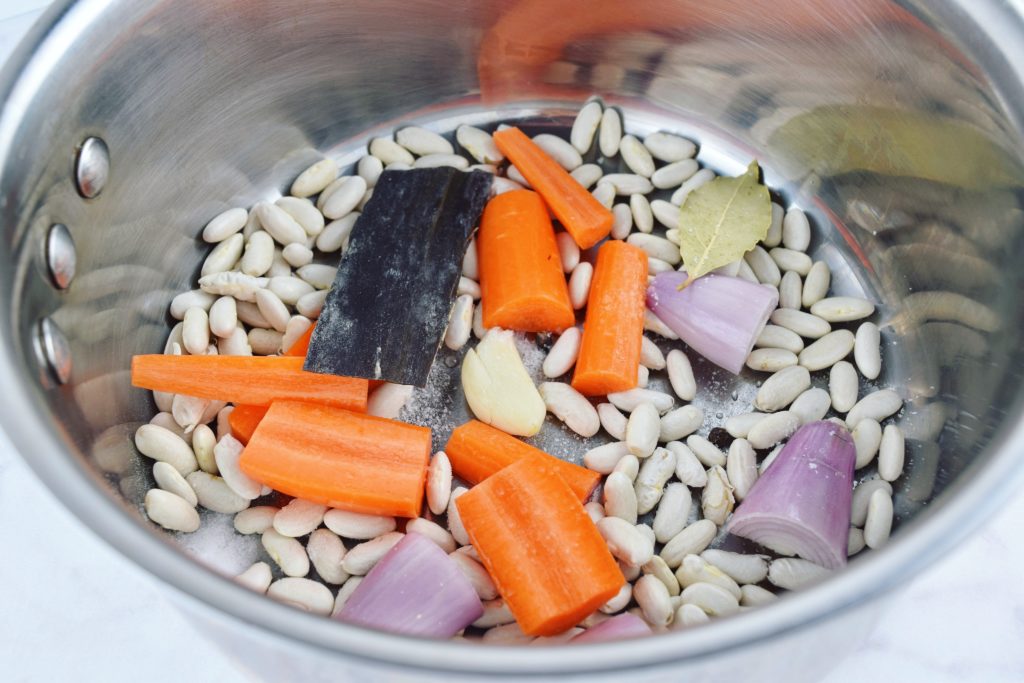
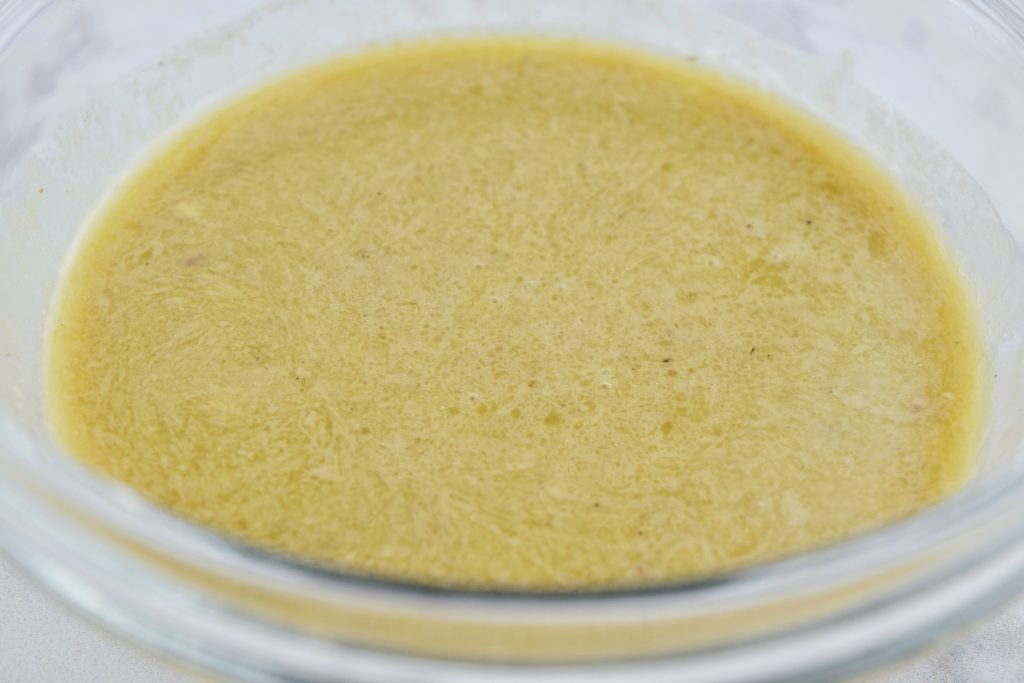
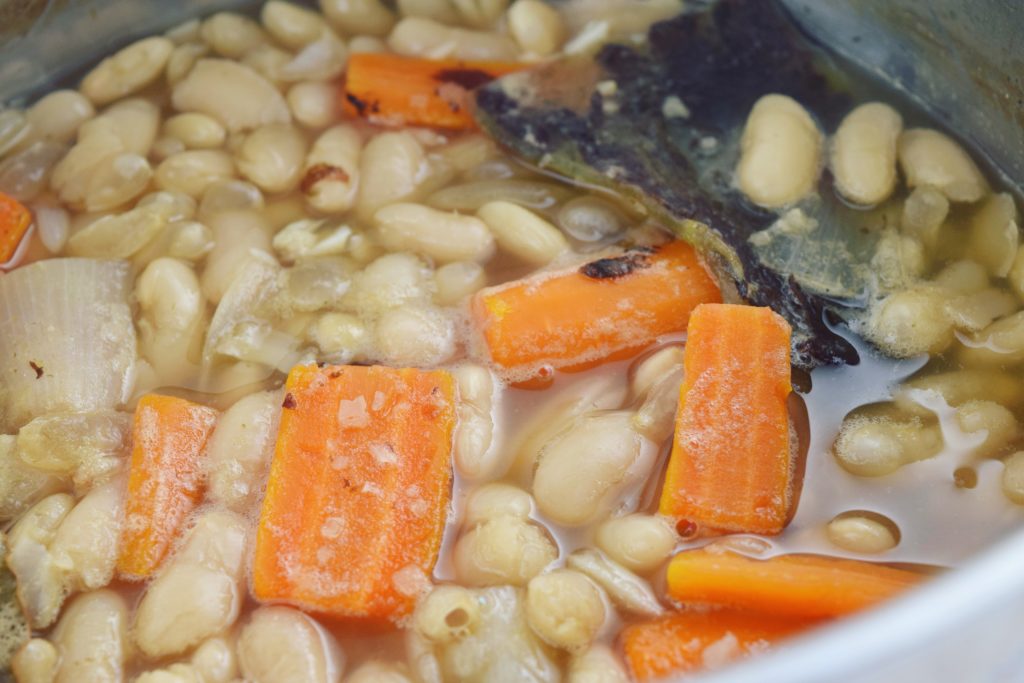
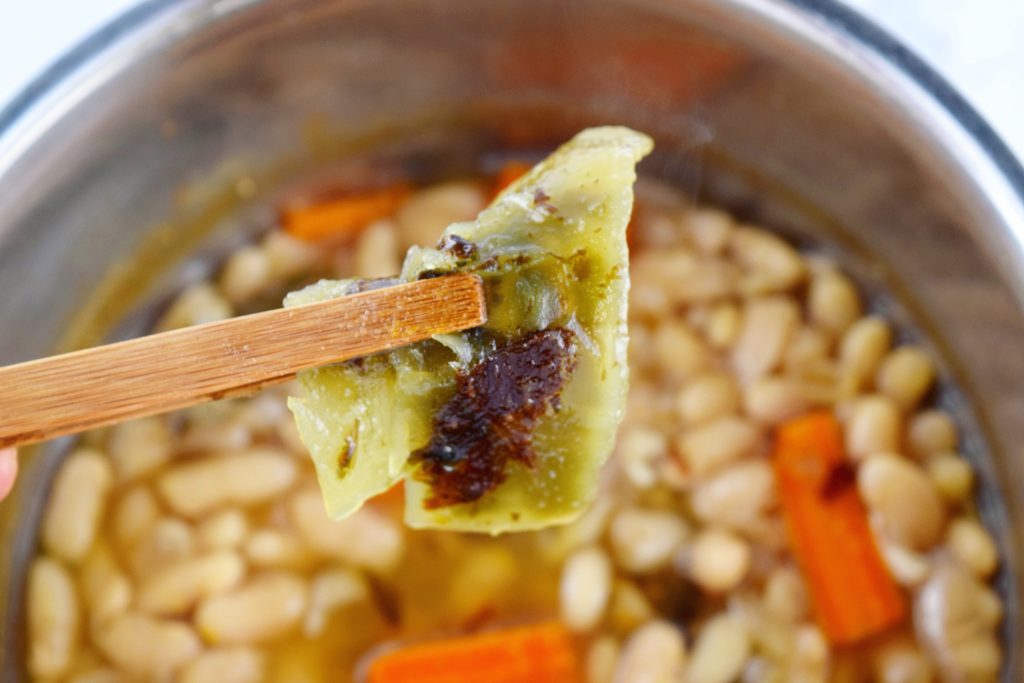
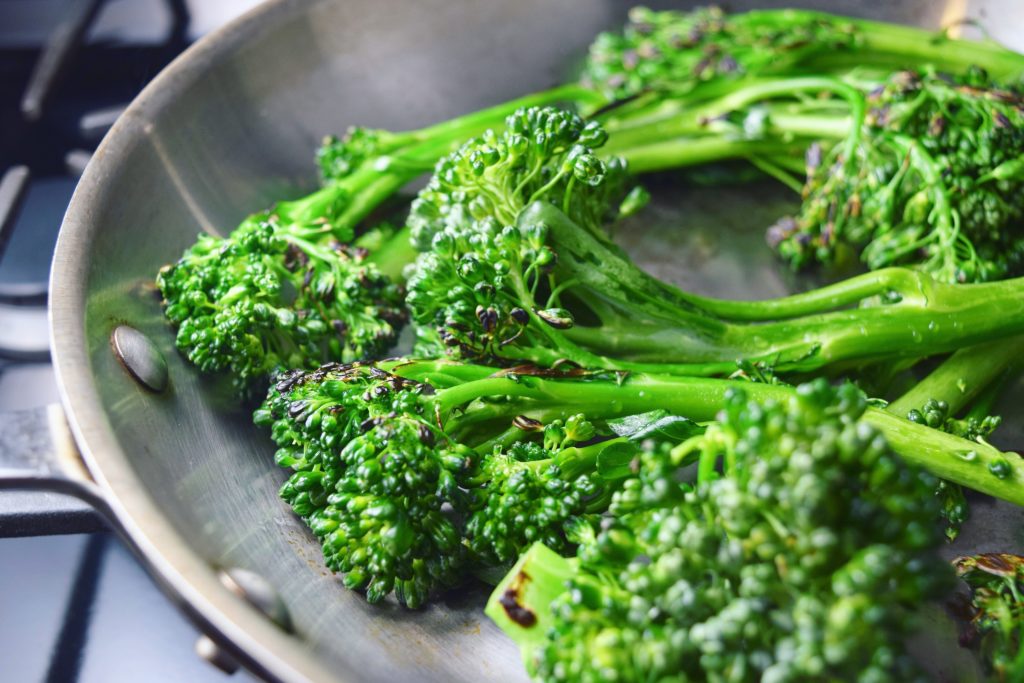
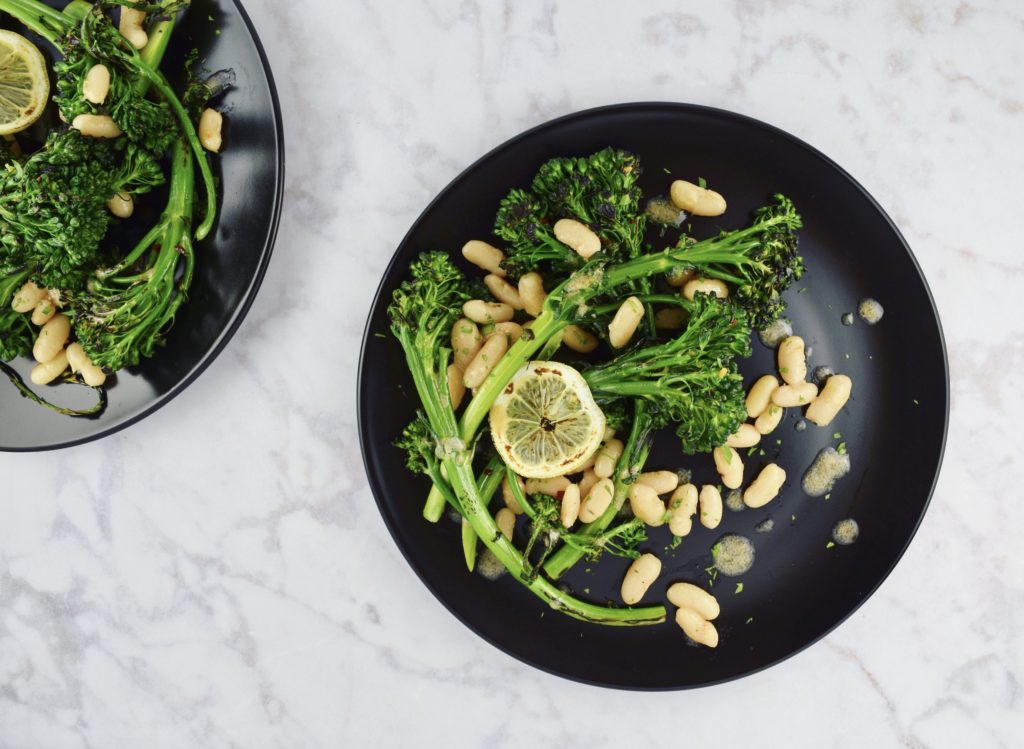
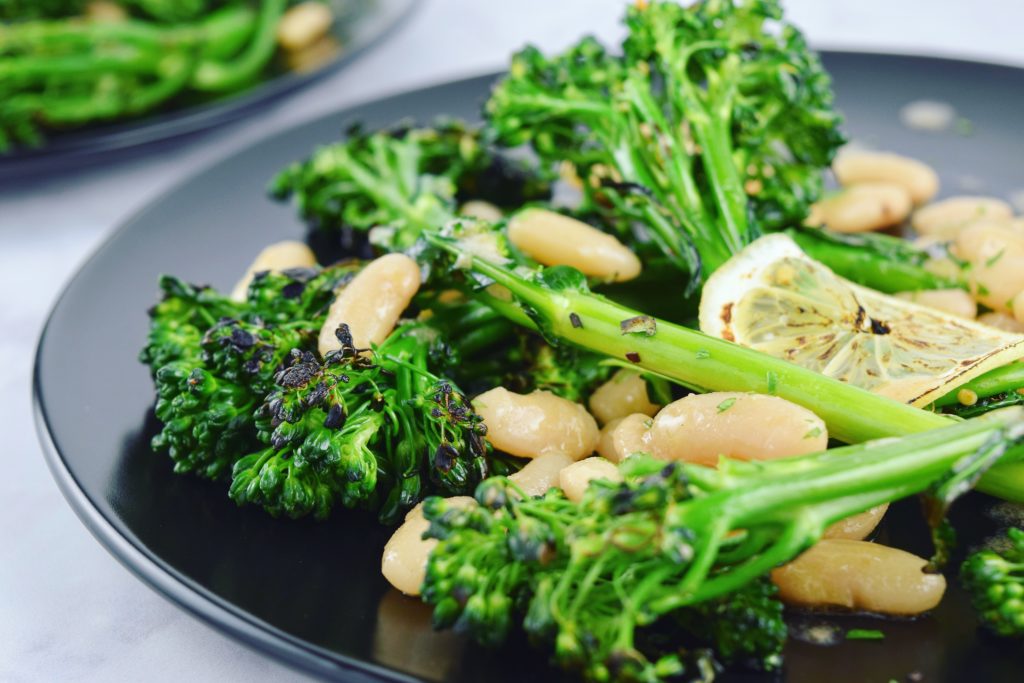
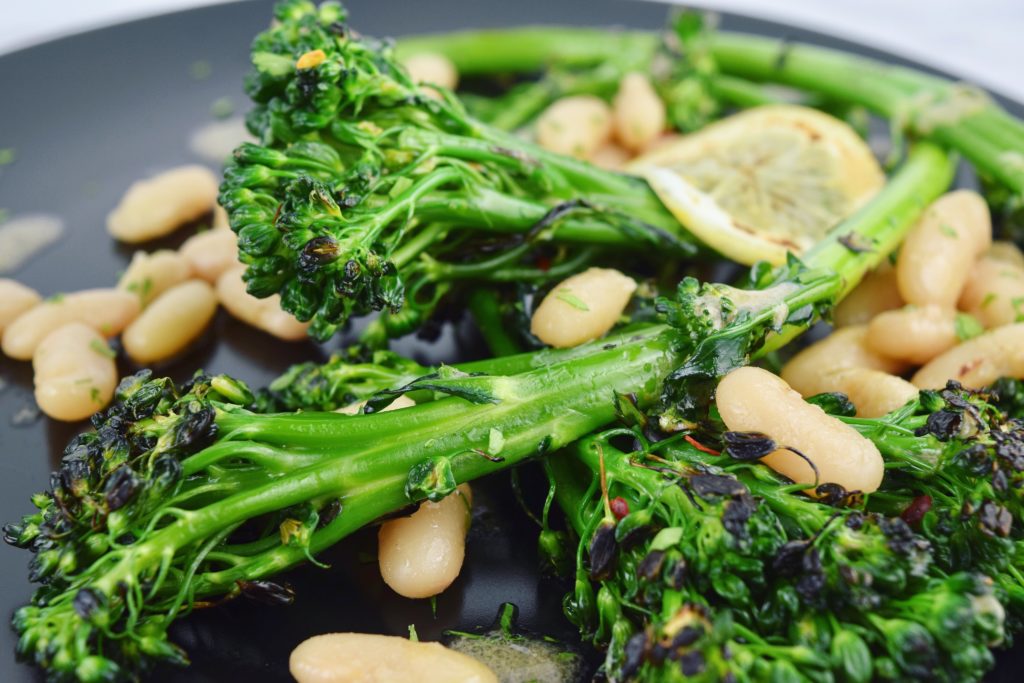
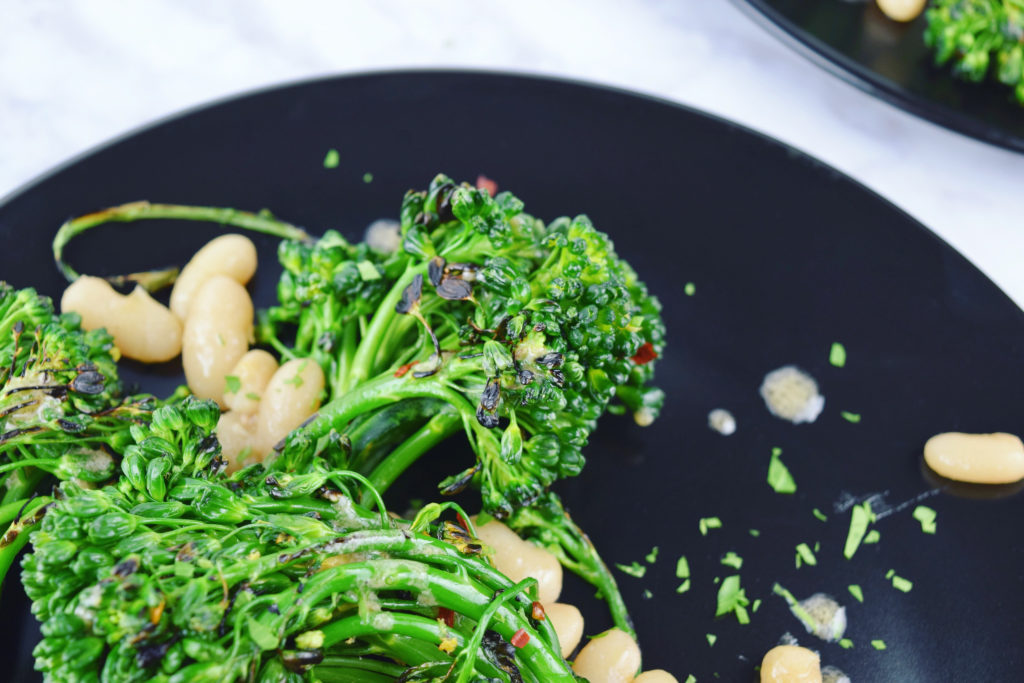


I absolutely adore this dish. Make it with really good ingredients, and they will truly shine. I used Rancho Gordo Marcella beans, and BLiS sherry vinegar, with shallots, carrots, and garlic from my CSA and an olive oil I love. Perfection.
Thanks so much for taking the time to post this lovely review! Quality ingredients always make a difference 😉 It makes me so happy that you love this dish as much as I do.
Outstanding recipe! I, too, used RG Marcella beans but with Capirete 20-year-old Vinagre de Jerez. Rest of ingredients from the supermarket and still terrific. Easy-peasy to boot. Lots of bang for very little bucks, both in terms of expense and effort. Delicious and satisfying, and this from someone who has meat or fish at nearly every meal. This will definitely be going into rotation.
Thanks so much Joan! I’m thrilled that you enjoyed the recipe. Can’t go wrong with those wonderful Rancho Gordo beans and quality sherry vinegar.